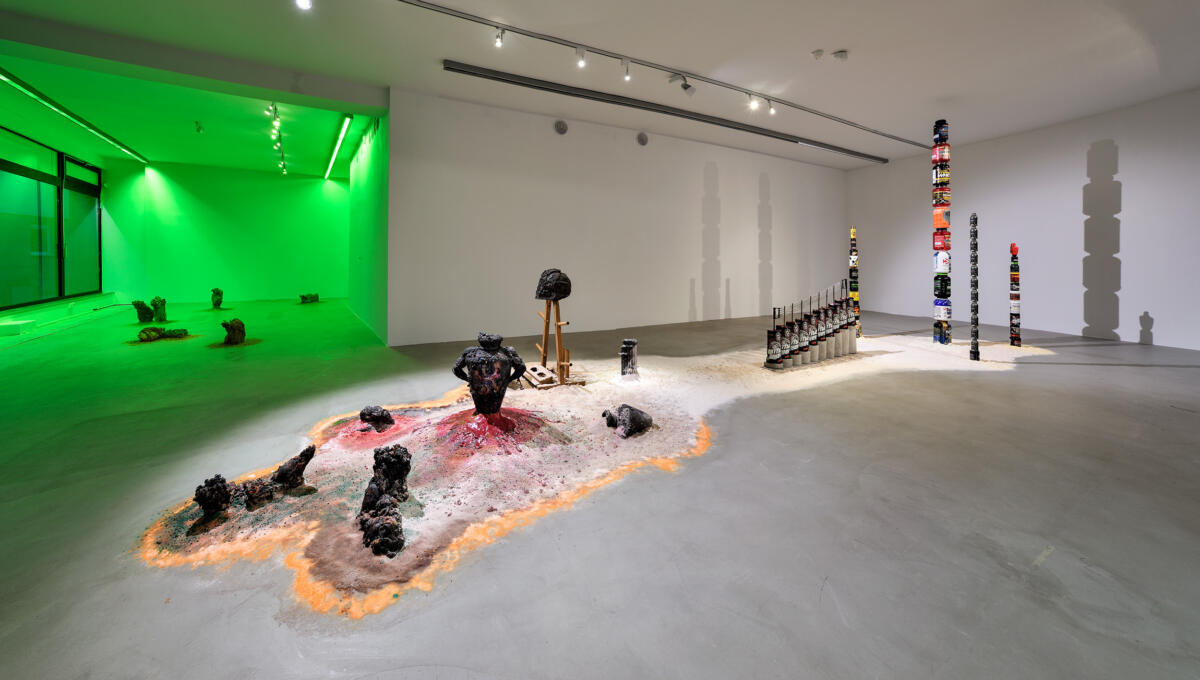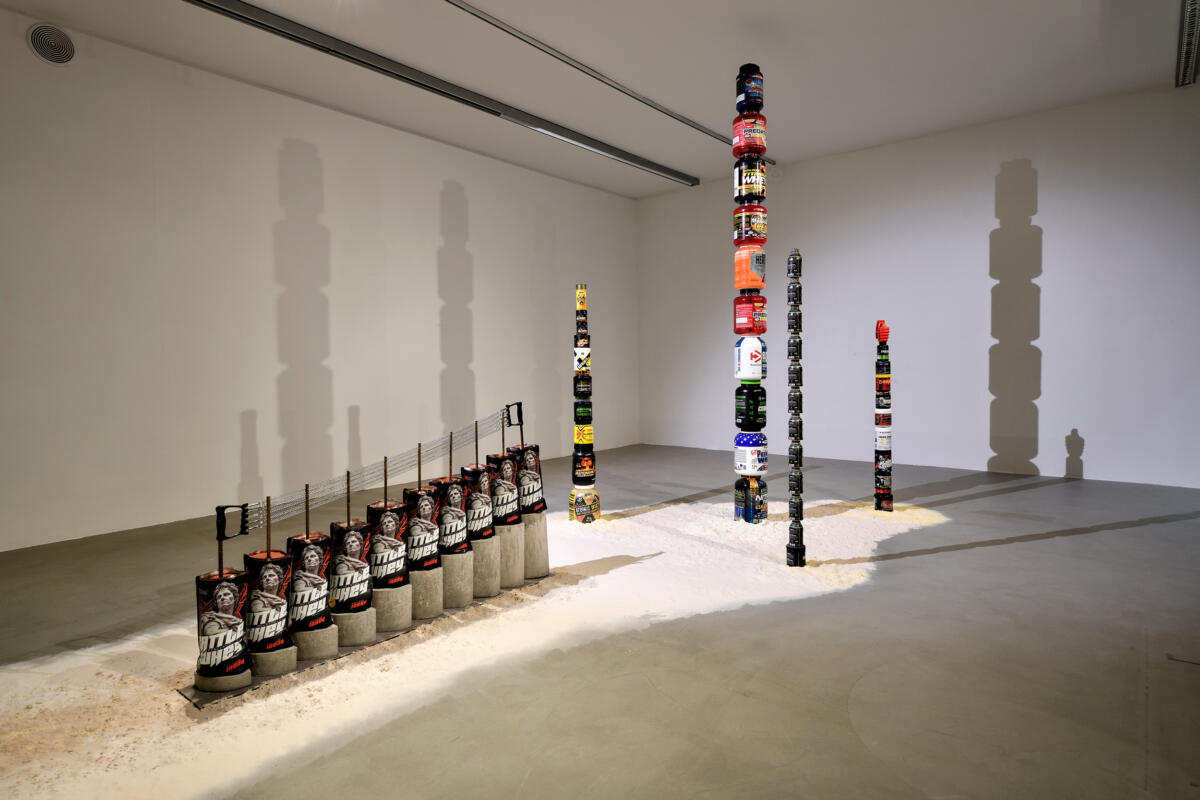[EN/SK] ‘Building a Real Body’ by Radovan Čerevka at Kunsthalle LAB
![[EN/SK] ‘Building a Real Body’ by Radovan Čerevka at Kunsthalle LAB](https://blokmagazine.com/wp-content/uploads/2021/01/8505588-1200x800.jpeg)
[EN]
text: Áron Fenyvesi
The Kunsthalle LAB exhibition which showcases the newest body of work of Košice-based artist, Radovan Čerevka (*1980). The current cycle of the artist arranged as a total environment in space focuses on the cult of the body and can also be interpreted as a dystopic post-human vision and is manifested as an interconnected large-scale installation.
Čerevka is one of the most consistently evolving Slovak artist of his generation and with this exhibition, he expands his work and radically broadens his vocabulary. This is the first time that Čerevka has experimented with the strong multi-sensorial aspect of his artworks, which are presented in a holistic, undividable network. The model-building of one of Čerevka’s signature methods, spectacularly grows on such a large scale that it creates complex environments.
The artist doesn’t only approach new formal aspects of his work, but rather he addresses an almost completely new topic – the bio-chemical cultivation of the human body, and the reinterpretation of our sometimes absurd present as a ruin of the past. The ever-present militarisation of our reality is a topic with which the artist has addressed throughout his career. This time this theme appears as a non-referential fantasy with a touch of science-fiction. We can also witness that the work of Čerevka, which was already changing and departing from more directly critical works, has evolved into an art production based on instinctive research and visceral reality-checks.
As we approach Čerevka’s environment, Chemical Beach, we perceive a scene which depicts a post-apocalyptic, dystopic, or post-human vision, in which only the remnants of human civilization remain. After carefully examining the complexity of the details of the work, we can state that nature is regaining its dominance over the remaining culture artefacts of mankind after the evident disappearance and disembodiment of humans. Crystals and sandstones take over the surface of objects, which were previously supplements of biological life. It is not clear what exactly caused the extinction of the human race. Čerevka’s radical vision excludes the presence of humans, introducing a post-human perspective to our future, which is obviously linked to our present. With his works, the artist also raises the question of the emancipation of objects. This issue became a focal point of contemporary philosophical thought in the writings of LaTour, Jane Bennett and object-oriented ontology, which investigate the possibility that objects can no longer be defined as dependent, inanimate things, especially if we think of military technologies, which automatically identify humans as targets.
Čerevka’s installation features nutrition powder recycled as beach sand. The beach setup strengthens the reflection on the phenomenon of the “cargo cult”. As a side effect, or rather a result of century-long European colonization, some decontextualized functional everyday objects became relics of other cultures, which recontextualized them, giving them a completely different mythical meaning. This is how completely coincidentally appearing everyday household objects became symbols and cultic artefacts of other cultures. The “cargo” lying on the nutrition beach of the artist can’t be perceived and understood from our present perspective and logic, as it contains information from the “future”, which we can’t fully process and decode. This is how the artist is able to build his own Brancusian column of infinity out of plastic canisters of nutrition powder. The objects which were designed with the branding tool of applied graphics, become something completely different as an “objet trouvé”, and this gesture of finding, modifying and displaying becomes a terrain of artistic creation. It is also ironic that these synthetic objects will most probably be present for a much longer time on the surface of the planet Earth than their producers and consumers.
Through the atemporal aspect of his art, Čerevka doesn’t only play with the allusion of the future, he also makes references to the other end of the timeline in motion. We can’t fully reconstruct motifs from the ancient past, whatever refined philanthropic manoeuvres we use, as our interpretative culture has changed so much since the time of their occurrence.
The artist arrives at the aesthetic of the ancient by a detour of instinctive research. Čerevka collected and pasted a number of nutrition products, which mostly speed up the bio-chemical process of muscle addition. The branding of these food supplements often refers to motifs of classical antiquity and hand-to-hand combat. It is also an interesting rhetorical phenomenon that, although the complexity of present-day instrumentalized body-building has a completely different base than endurance and the asceticism-based ancient cultivation of the body, it still uses the same visual arguments for marketing purposes. Furthermore, warfare and military strategies have applied widespread objectification and utilisation of the human body since their ancient origins, and do not consider humans as separate entities, but rather as parts of a “big body” of combat cohorts.
Via his exhibition, the artist also reflects on the fact that corporeality has become a contemporary fetish, and that’s why his sculptures appear as cargo cult totems, and ritual artefacts. The magical logic is as present in our present body culture as in archaic rituals. The artist applied the strategy during the exhibition-making of transforming bodies into signs, which for example are represented by a vessel, such as a Greek amphora, which becomes a mannered allusion to the body, incorporating the above conflict between the human body being a subject, or an object of itself.
Čerevka’s environment is an atemporal post-human vision of consciously mixed references ranging from the strong green light of modern warfare night vision googles to ruin-like archaic objects. The identifiable artefacts of the artist are in a state of entropy and chemical decomposure reflecting on the consensual dark future of humanity. The artist creates this vision of a potential new reality with intuitive modification of the existing elements of the present.
The above artistic method of the winner of the 2013 Oskár Čepan Award highlights a constant and a consequent shift of artistic strategies and interests. Čerevka is a founding member of the Kassaboys art group, and has slowly departed from provocative neo-conceptual actions and ironic situationalism, which focussed on phenomena within Slovak society and politics, and moved towards less referential and more intuitive artistic work, which continues to address globally relevant questions. As part of this process, the previous solo exhibition of the artist was an important step at the Košice’s East Slovak Gallery, which addressed the topic of fictional ruins with the help of model-building using hybrid sculptural work. Many previous dynamic interests of the artist hinted at the present environmental experiment at Kunsthalle LAB, perhaps the largest-scale in the artist’s career so far. The present exhibition probably contains elements which will evolve on their own in the artistic practice of Radovan Čerevka, Lecturer at the Faculty of Arts of the Technical University of Košice.
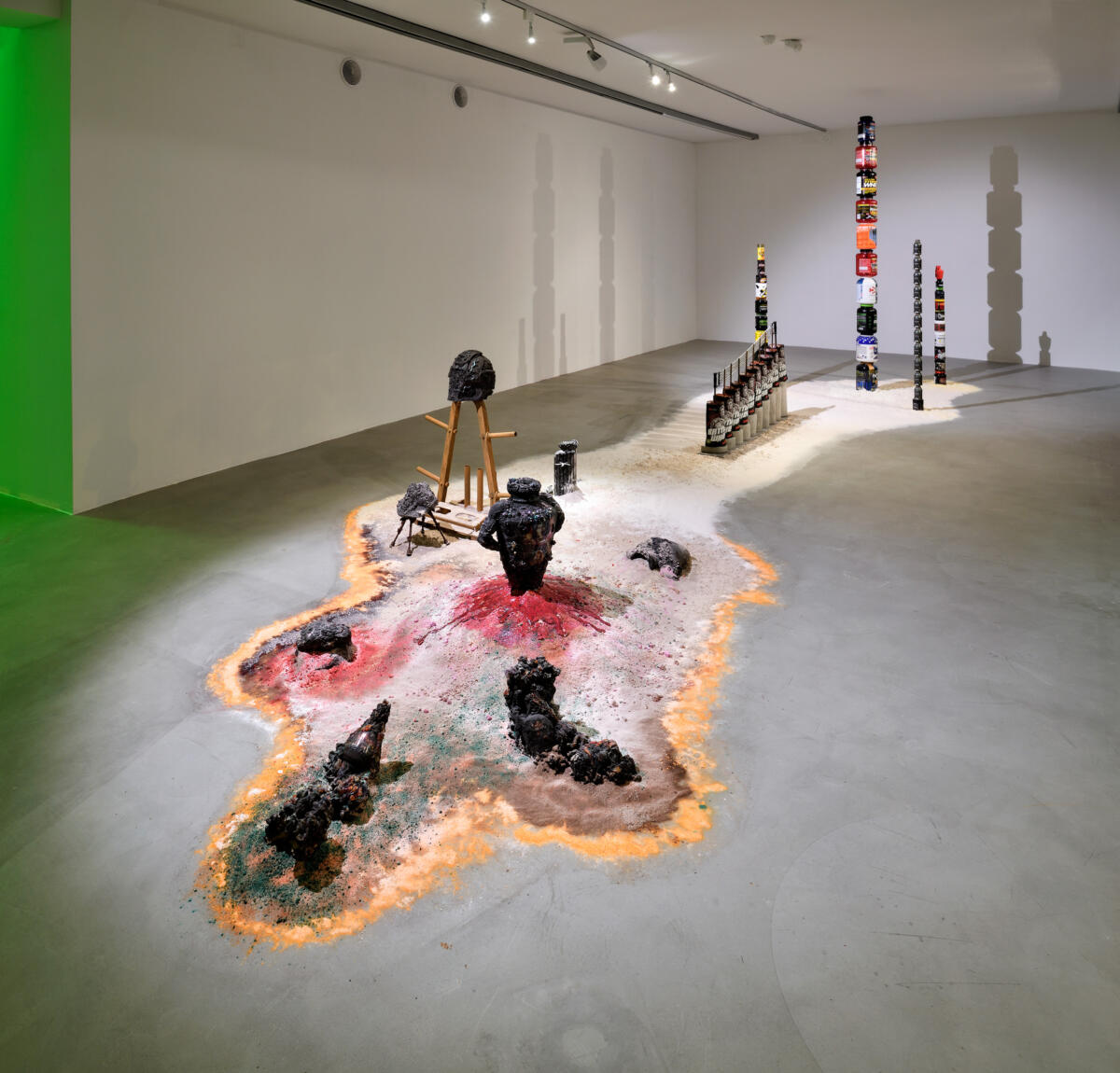

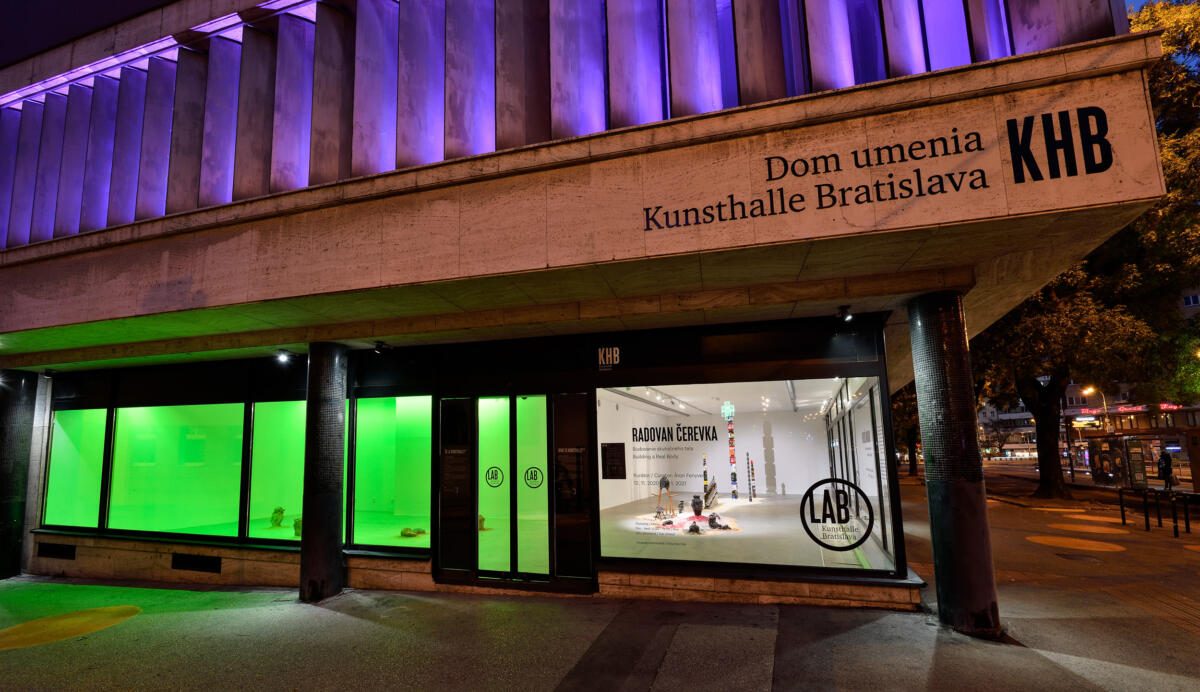
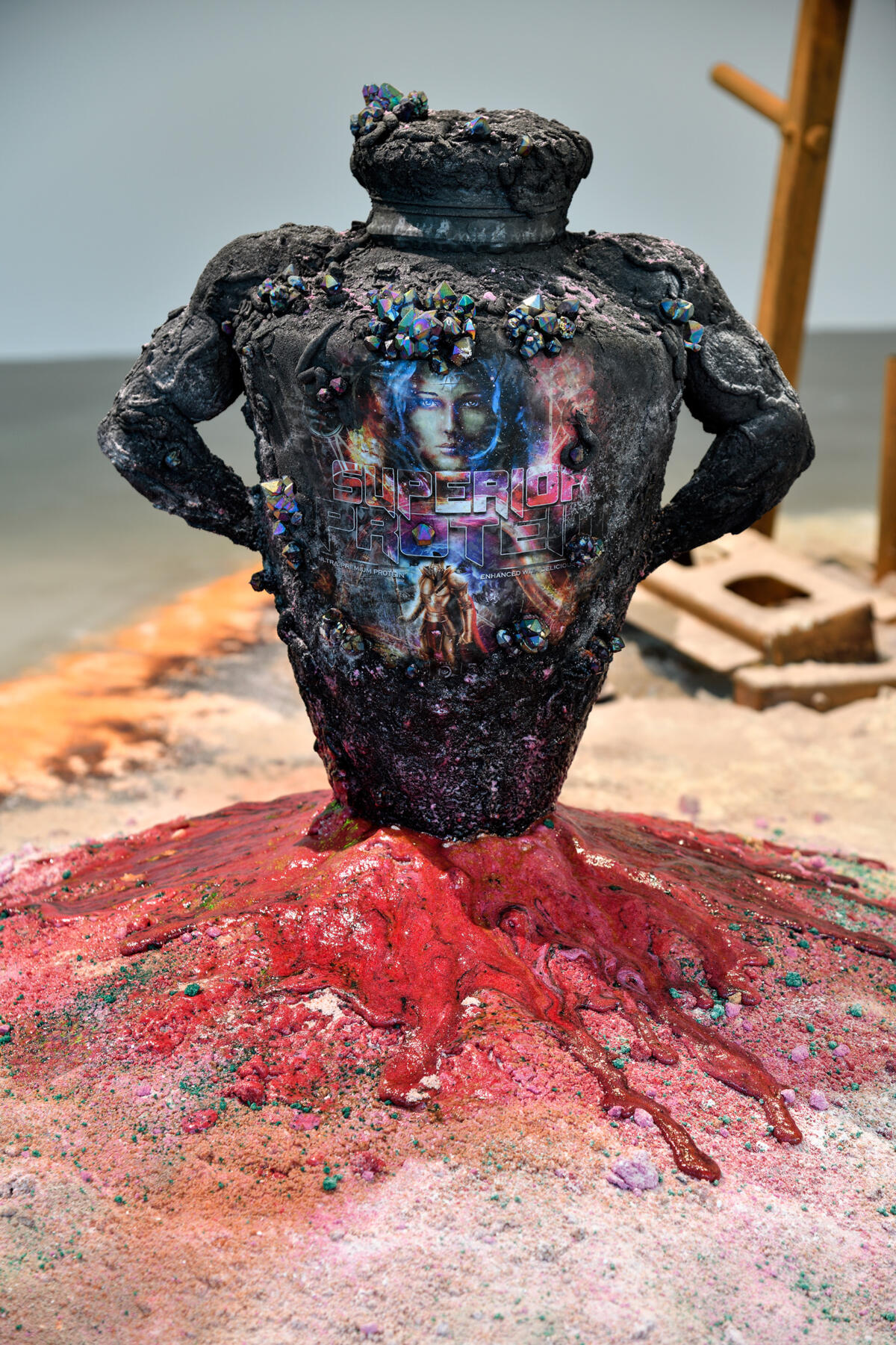
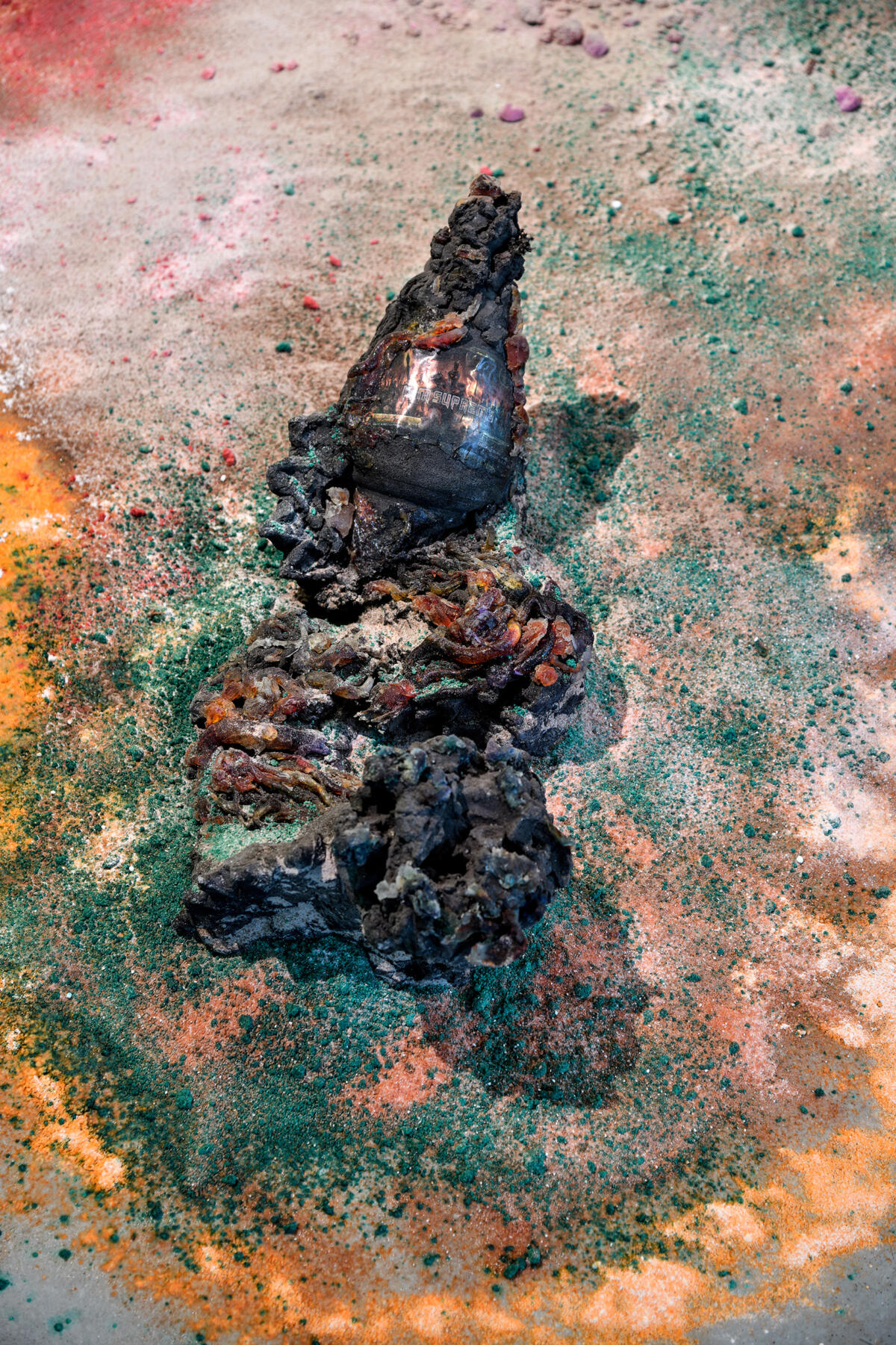
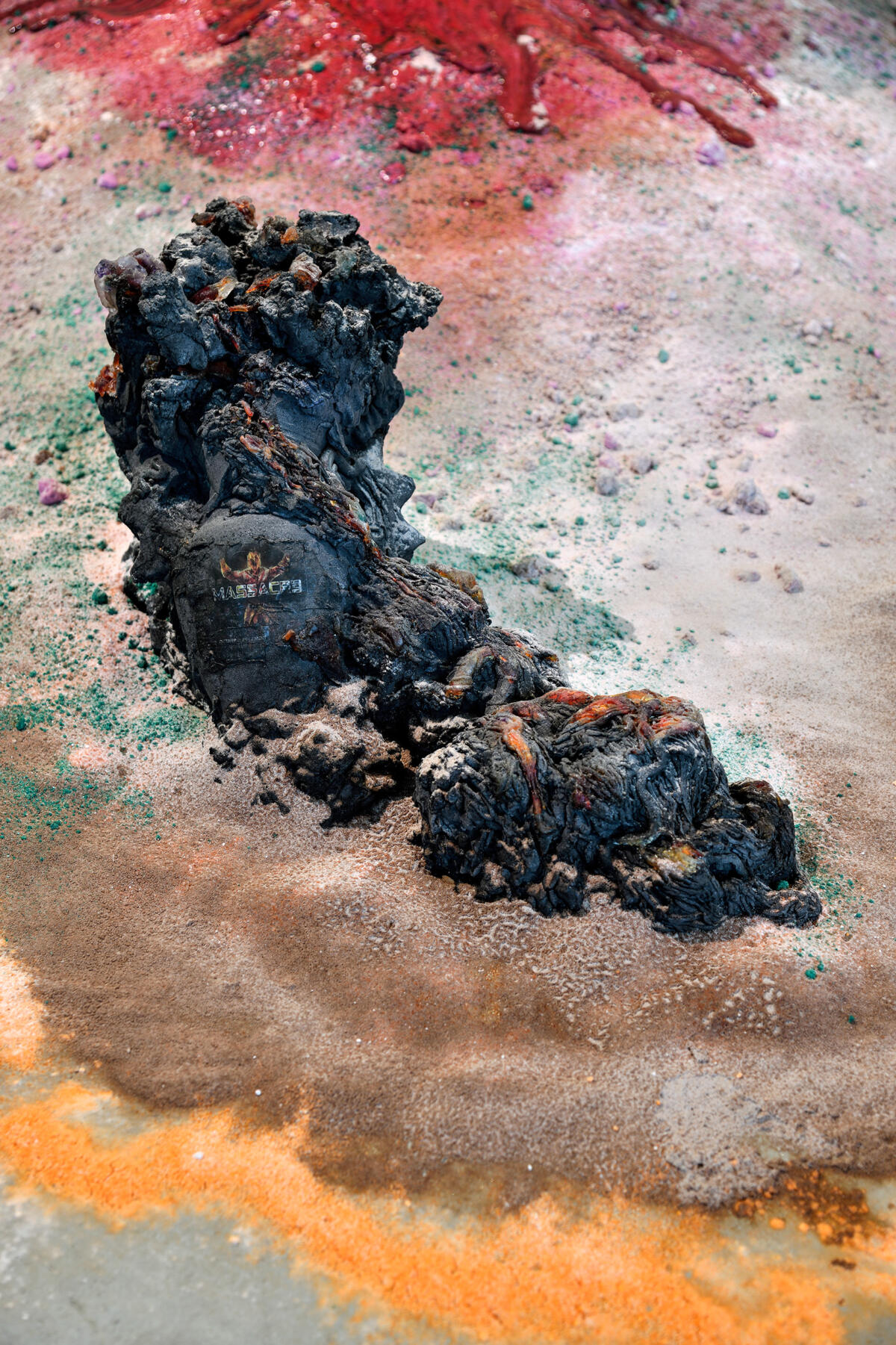
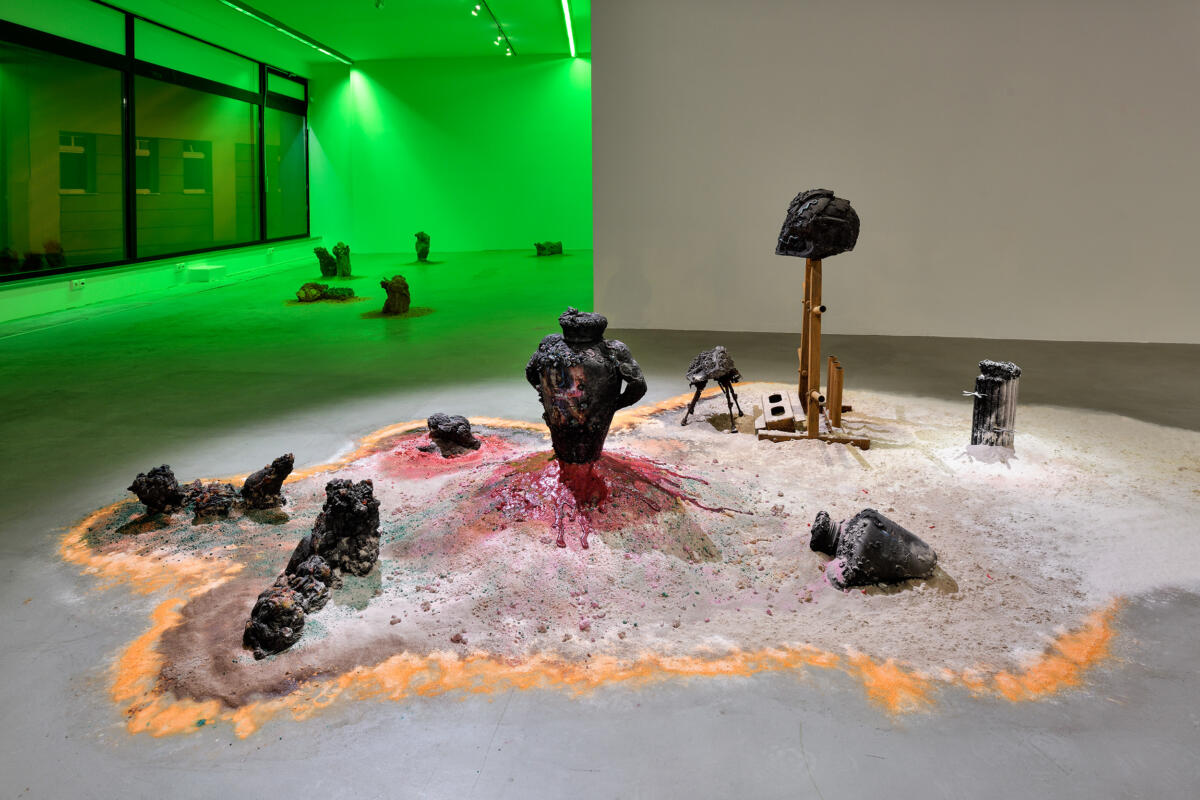
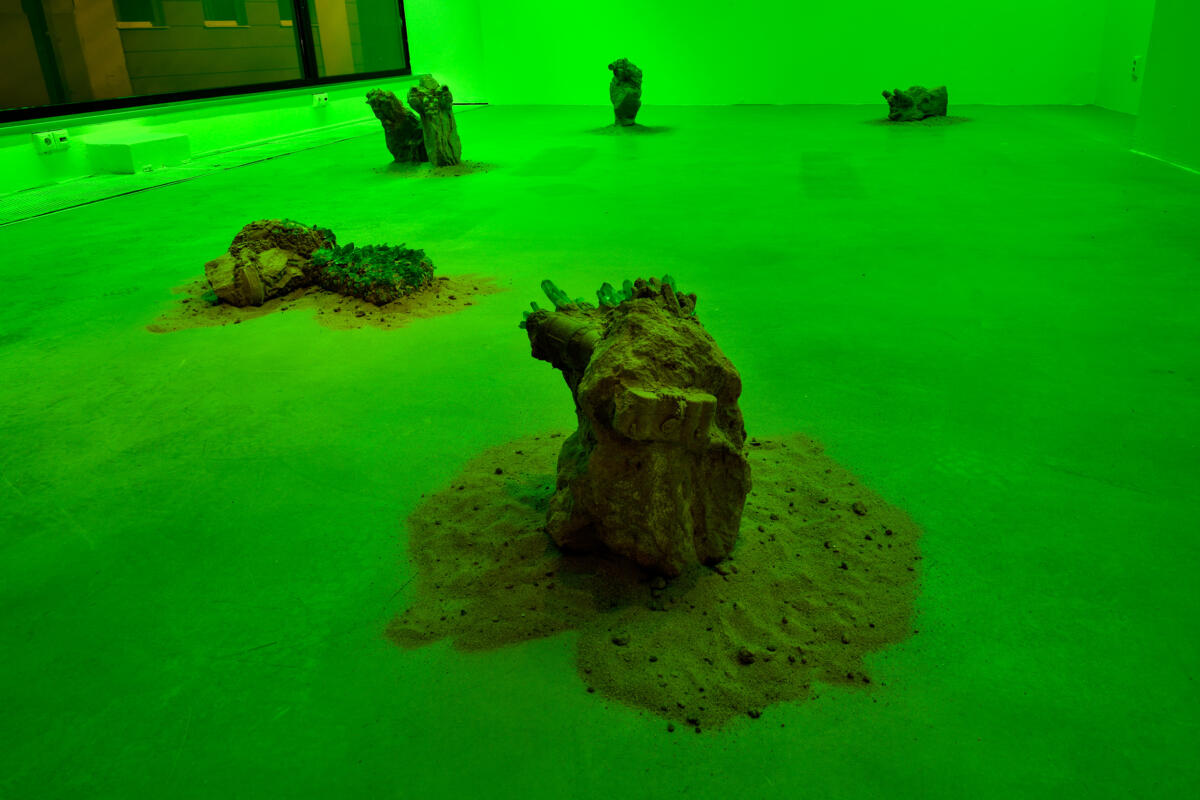
[SK]
text: Áron Fenyvesi
Výstava v Kunsthalle LAB predstavuje najnovšiu etapu tvorby košického umelca — Radovana Čerevku (*1980). Jeho aktuálny cyklus tvorí komplexný environment v danom priestore a je ideovo sústredený okolo kultu tela. Možno ho interpretovať aj ako dystopickú post-humánnu víziu, ktorá sa realizuje vo vnútorne prepojenej veľkoplošnej inštalácii.
Čerevka – ako jeden z najkonzistentnejšie sa rozvíjajúcich slovenských umelcov svojej generácie – prostredníctvom aktuálnej výstavy zdokonaľuje vlastné umelecké postupy a radikálne rozširuje výrazové prostriedky. Vo svojich dielach, prezentovaných v holistickom, nedeliteľnom systéme, po prvýkrát experimentuje so silným multisenzorickým aspektom. Je tiež pozoruhodné, ako sa budovanie modelov (čo je jedna z umelcových signifikantných metód) rozrástlo do tak veľkého rozsahu, že môže vytvárať komplexné prostredie.
Na druhej strane, umelec nesleduje len nové formálne aspekty svojej práce, ale dospieva k takmer úplne novej téme, alebo skôr – k oblasti záujmu. Ide o biochemickú kultiváciu ľudského tela a reinterpretáciu našej (občas absurdnej) prítomnosti ponímanej skôr ako ruiny z minulosti. Všadeprítomná militarizácia našej reality je téma, ktorou sa umelec zaoberá od počiatku svojej kariéry. Tentokrát sa však javí ako nereferenčná fantázia s nádychom sci-fi. Môžeme tiež byť svedkami toho, ako sa Čerevkov umelecký program v posledných rokoch transformuje – odkláňa sa od priamo kritických prác a prechádza na tvorbu založenú na inštinktívnom výskume a hĺbkovom pozorovaní reality.
Ako sa blížime k inštalácii Chemická pláž, zrazu zreteľne vnímame scénu zobrazujúcu post-apokalyptickú, dystopickú, alebo ak chcete – post-humánnu víziu, v ktorej sú prítomné iba zvyšky ľudskej civilizácie. Naviac, po dôkladnom preskúmaní celej tejto spleti detailov diela môžeme jasne konštatovať, že príroda tu znovunadobúda svoju dominanciu nad zostávajúcimi kultúrnymi artefaktmi ľudstva po jeho vymiznutí. Kryštály a pieskovce preberajú nadvládu nad povrchmi objektov, ktoré tu kedysi spolu existovali ako doplnok biologického života. Autor nevysvetľuje, čo tento zánik ľudskej rasy spôsobilo. Radikálna vízia Čerevku vylučuje prítomnosť ľudí a zavádza post-humánny pohľad na našu budúcnosť, ktorý je jednoznačne spojený s našou súčasnosťou. Umelec s jeho dielom otvára taktiež otázku emancipácie objektov. Tento problém sa stal ústrednou témou súčasného filozofického myslenia založeného na textoch Bruna Latoura, Jane Bennetovej a objektovo orientovanej ontológie, ktoré skúmajú možnosti, kedy objekty už nemožu byť definované ako závislé neživé veci, obzvlášť ak uvažujeme o vojenských technológiách, ktoré automaticky identifikujú ľudí ako ciele.
Inštalácia Radovana Čerevku v Kunsthalle LAB pracuje s výživovým práškom, ktorý je recyklovaný tak, aby plnil funkciu plážového piesku. Rozmiestnenie prvkov na „pláži“ taktiež posilňuje úvahy o fenoméne tzv. „kargo kultu“. Vedľajším efektom, alebo skôr – výsledkom storočnej európskej kolonizácie bola skutočnosť, že niektoré dekontextualizované predmety každodennej potreby sa stali relikviami iných kultúr, ktoré ich re-kontextualizovali a naplnili úplne inými mýtickými významami. Takto sa úplne náhodne objavujúce sa predmety bežnej domácej spotreby stávajú symbolmi a kultovými artefaktmi iných kultúr. „Kargo“ (z anglického slova „náklad“) ležiace na umelcovej „výživovej“ pláži taktiež nie je možné vnímať a chápať z pohľadu našej súčasnej logiky, nakoľko obsahuje informácie z „budúcnosti“, ktoré nedokážeme úplne spracovať a dekódovať. Takto sa umelec stáva tvorcom svojho vlastného „Brancusiovského nekonečného stĺpa“ pozostávajúceho z plastových nádob na výživový prášok. Objekty, ktoré boli navrhnuté branding nástrojmi grafického dizajnu, sa stávajú niečím úplne iným než „objet trouvé“, a toto gesto objavenia, pretvorenia a vystavenia sa stáva terénom autorovej tvorby. Vo svojej podstate je taktiež dosť ironické, že tieto syntetické objekty s najväčšou pravdepodobnosťou zostanú na povrchu planéty Zem oveľa dlhšie ako ich výrobcovia a spotrebitelia.
Aj napriek tomu, že Čerevka narába s mimočasovým aspektom, nejde tu len o alúziu na budúcnosť – súčasne dáva do pohybu aj odkazy z druhého konca časovej osi. Bez ohľadu na to, aké rafinované filantropické manévre by sme tu uskutočnili, nedokážeme úplne zrekonštruovať motívy dávnej minulosti, nakoľko naša interpretačná kultúra sa od doby ich výskytu tak veľmi zmenila.
K estetike staroveku sa umelec dostáva okľukou cez inštinktívny výskum. Radovan Čerevka zozbieral a zhromaždil veľa výživových produktov, ktoré väčšinou urýchľujú biochemický proces v svalovej hmote. Marketingová stratégia týchto výživových doplnkov sa často odvoláva na klasické staroveké motívy kontaktného boja. Zaujímavým rétorickým javom je aj to, že, hoci súčasná komplikovaná a inštrumentalizovaná kulturistika má úplne iný základ ako starodávny spôsob zušľachťovania tela založený na vytrvalosti a askéze, pre marketingové účely používa stále rovnaké vizuálne argumenty. Vojnové umenie a vojenské stratégie navyše uplatňujú rozsiahlu objektivizáciu a využitie ľudského tela už odpradávna, teda nepočítajú s ľuďmi ako so samostatnými entitami, ale využívajú ich ako komponenty „veľkého tela“ v rámci bojových zoskupení.
Umelec svojou výstavou uvažuje, ako sa v súčasnosti telesnosť stala fetišom. Aj to je dôvod, prečo sa jeho sochy objavujú v úlohe kargo-kultových totemov a rituálnych artefaktov. Táto zázračná logika je rovnako prítomná v našej súčasnej kultúre tela, ako aj v prastarých rituáloch. Umelec túto stratégiu uplatnil počas inštalácie výstavy pri transformácii tela do znakovej podoby. Predstavuje ho napríklad nádoba, amfora gréckeho typu, ktorá sa takto definitívne stáva hyperbolizovaným odkazom na neho. V nej je zakomponovaný spomínaný konflikt, pričom ľudské telo je subjektom alebo objektom samého seba.
Environment Radovana Čerevku je mimočasovou post-humánnou víziou zámerne kombinovaných odkazov – od jasne zeleného svetla, aké nájdeme v moderných bojových okuliaroch používaných na nočné videnie, až po ruiny zdanlivo archaických objektov. Umelcove identifikovateľné artefakty sú v stave entropie a chemického rozkladu, čím poukazujú na konsenzuálnu temnú budúcnosť ľudstva. Intuitívnou úpravou existujúcich prvkov zo súčasnosti vytvára umelec túto víziu potenciálnej, novej reality.
Vyššie uvedená umelecká metóda laureáta Ceny Oskára Čepana z roku 2013 zvýrazňuje neustály logický posun jeho umeleckých stratégií a záujmov. Radovan Čerevka, ktorý je zakladajúcim členom umeleckej skupiny Kassaboys, sa pomaly odklonil od provokatívnych neokonceptuálnych počinov a ironického situacionizmu zameraného na aktuálne javy v slovenskej spoločnosti a politike smerom k menej referenčnej a intuitívnejšej umeleckej tvorbe, ktorá sa stále zaoberá globálne relevantnými otázkami. V tomto procese bola predchádzajúca samostatná výstava umelca vo Východoslovenskej galérii v Košiciach rovnako dôležitým krokom, nakoľko sa už zaoberala témou fiktívnych ruín vyrobených z modelov lietadiel pri uplatnení hybridných sochárskych postupov. Mnoho doterajších premenlivých záujmov umelca smerovalo k aktuálnemu experimentu v Kunsthalle LAB, ktorý je možno zatiaľ najväčším v umelcovej kariére. Táto výstava už pravdepodobne obsahuje niektoré z prvkov, ktoré sa ďalej budú samostatne vyvíjať v umeleckej praxi Radovana Čerevku, vysokoškolského učiteľa pôsobiaceho na Fakulte Umení Technickej univerzity v Košiciach.
Imprint
| Artist | Radovan Čerevka |
| Exhibition | Building a Real Body |
| Place / venue | Kunsthalle LAB, Bratislava, Slovakia |
| Dates | 12 November 2020 – 28 February 2021 |
| Curated by | Áron Fenyvesi |
| Website | kunsthallebratislava.sk |
| Index | Áron Fenyvesi Kunsthalle LAB Radovan Čerevka |

